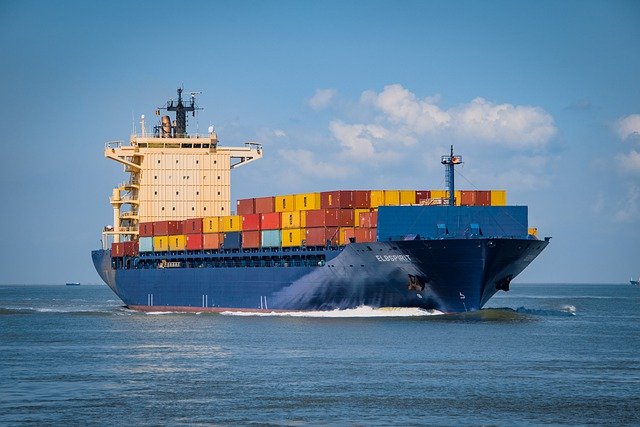India as a country has a vast landscape with a chunk load of cargo that travels across this vast expanse of land all the way from Assam to down south and vice-versa. Close to 90% of India’s cargo is carried by either road or rail networks combined; however, these movements are making a huge impact on the environmental status-quo and are also strangulated due to congestion despite having prevalent networks. India measures 3,214 km from north to south and 2,933 km from east to west. It has a land boundary of 15,200 km and a coastline of 7,516.6 km of which the mainland is of about 5422.6 km and the island territories make up the remaining 2094 km. The transportation demographics of India uses all four major modes of transport of which road transportcontributes the lion’s share carrying 60% of the country’s cargo, followed by 35% of freight demand is met by rail, 6% by waterways and less than 1% by air. Efficient logistics are a key cornerstone for the continuation of India’s economic development in the years to come. The robust growth in manufacturing envisioned through the “Make in India” initiative will demand high levels of logistical efficiency, which means that goods must not only be produced, they must also be efficiently transported to markets at reasonable prices.
Given such distances and the volume of cargo movement, rail transport was found to be one of the cheaper options for all cargoes over medium to long distances. However, Rail and road transport systems have their own challenges and limitations contributing to the logistical development in the country. These limitations and challenges served as an alchemist in bringing out a revolutionary mode called “Coastal Shipping” which plays a dual role of giving the flexibility of large volume shipments and huge cost savings. Coastal shipping is nothing but movement of passengers and cargo mainly by sea along the coast, without crossing the ocean. Transportation of goods by coastal vessel is far more efficient and cost-effective than rail or road transport and is much less prone to theft and damage.
Coastal shipping is ideal for transportation of Containers, Project Cargoes, Over Dimensional Cargoes, RORO cargoes such as cars, trucks, semi-trailer trucks, trailers, and railroad cars, Dry Bulk Cargoes like grain, fertilizers, steel, coal, salt, stone, scrap and minerals and Liquid Bulk Cargoes like oil products (such as petrol, diesel oil, kerosene, aviation spirit). The primary advantages of coastal shipping are huge cost savings to the shipper and government, reduction of road traffic congestion and decrease in air pollution.
In 2019 the government of India envisioned of moving cargo from the eastern most state in India to the southern tip of India and vice versa through coastal shipping and today in 2021, this vision has become a reality as coastal shipping contributes to 6% of cargo traffic at the country’s various ports.
The government of India is trying to boost coastal shipping and Inland water transport (IWT) in an attempt to reduce logistics cost to less than 10 per cent of GDP on par with developed countries such as Germany from the present 13 per cent. The lower cost of transporting bulk commodities, from coal to metal ores, will distribute savings across the value chain of India’s manufacturing sector which was long hindered by high logistics costs but now these saving can be redeploy elsewhere, toward hiring more workers and expanding operations, which could help fuel economic growth. The target of cargo movement through coastal shipping from 120 Million tonnes PA in the year 2018-19 to 230 million tonnes per annum by 2025 Union Minister Mansukh Mandaviya said “We have a coastline of 7,500 km which can be harnessed to fuel economic growth and employment.” 1,400 km of waterways have been fully developed and an additional 1,000 km of waterways are being developed on a priority basis. Shri Nitin Gadkari, Minister of Road Transport & Highways, Shipping and Water Resources, River Development & Ganga Rejuvenation said, “It’s a red flag day in the history of transportation in India. I’m glad to see this modal shift in the logistics chain.
The combination of Railways and Coastal Shipping is a win-win situation for both modes as this will release capacity for railways to carry others goods and facilitate more commodities like steel, cement, and other general cargo to be transported through coastal trade, thereby enhancing the coastal trade basket.” “Besides being economical, coastal shipping is environmentally friendly and can result in a 6 percent reduction in harmful chemicals and pollutants in India. With an estimated diversion of about 5 percent cargo to coastal shipping, the reduced traffic on rail and road can result in savings of 230 billion rupees” Transportation cost is a critical trigger which decides cost of goods and services offered by any company in addition to it acting as a main logistical backbone to any industry, the main objective is to bring down this cost so that the economy can derive the best benefits. In a country like India with a vast coastline, coastal shipping is the magical wand to exploit the cost saving method to all cargo transportation needs.




